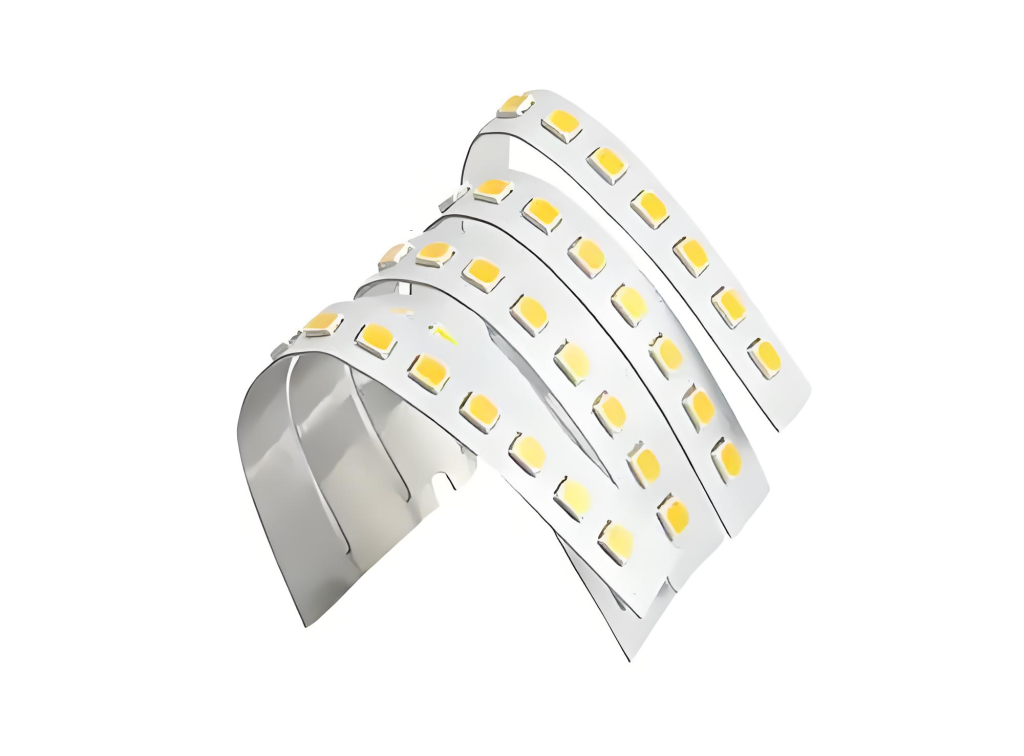In the world of printed circuit boards (PCBs), aluminum substrate stands out with its unique characteristics and extensive application scenarios.

Characteristics of Aluminum Substrate
Excellent Heat Dissipation Performance
The aluminum substrate is composed of an aluminum plate, an insulating layer, and copper foil. The aluminum plate acts as the core for heat dissipation, boasting a high thermal conductivity coefficient. During the operation of electronic devices, the heat generated by electronic components can be quickly conducted through the copper foil to the aluminum plate and then dissipated into the surrounding environment. This is crucial for high-power electronic devices. For example, in the LED lighting field, the aluminum substrate can rapidly dissipate the heat generated by LED chips, ensuring stable performance and prolonging the service life.
Good Electrical Insulation
Although the aluminum substrate contains an aluminum plate, the insulating layer in the middle ensures good electrical insulation between circuits. This enables the aluminum substrate to work safely in high-voltage and high-frequency environments, avoiding equipment damage or safety accidents caused by electrical failures. The insulating layer is usually made of high-performance insulating materials that can withstand high voltages and temperatures while maintaining stable insulation performance.
High Mechanical Strength
The aluminum plate itself has high mechanical strength, which allows the aluminum substrate to withstand certain external forces and vibrations during installation and use. Compared to traditional PCB materials, the aluminum substrate is more durable and can adapt to various complex working environments. In fields such as automotive electronics and aerospace, where electronic devices need to operate in harsh environments, the high mechanical strength of the aluminum substrate can ensure the integrity of circuits and prevent line breaks or component damage caused by external forces.
Application Scenarios
LED Lighting:
Aluminum substrates are widely used in LED lighting due to their excellent heat dissipation. This reduces LED chip temperature, enhancing light efficiency and lifespan. They can be customized in various shapes and sizes to meet market demands.
Power Modules:
With good heat dissipation and electrical insulation, aluminum substrates are ideal for power modules. They ensure stable power output and prevent electrical failures.
Automotive Electronics:
Given their high mechanical strength, heat dissipation, and electrical insulation, aluminum substrates are common in automotive electronics like headlights, instrument panels, and car audio.
Communication Equipment:
The good electrical insulation and processability of aluminum substrates make them essential for communication equipment such as base station antennas, radio frequency modules, and optical communication modules.
Industrial Control:
Aluminum substrates are suitable for industrial control equipment due to their high mechanical strength, heat dissipation, and electrical insulation. They improve the reliability and stability of industrial controllers, sensors, and frequency converters.
In conclusion, aluminum substrates play an important role in the field of PCBs with their unique characteristics and extensive application scenarios. As technology continues to progress and market demands continue to grow, the performance and application areas of aluminum substrates will continue to expand and innovate.
